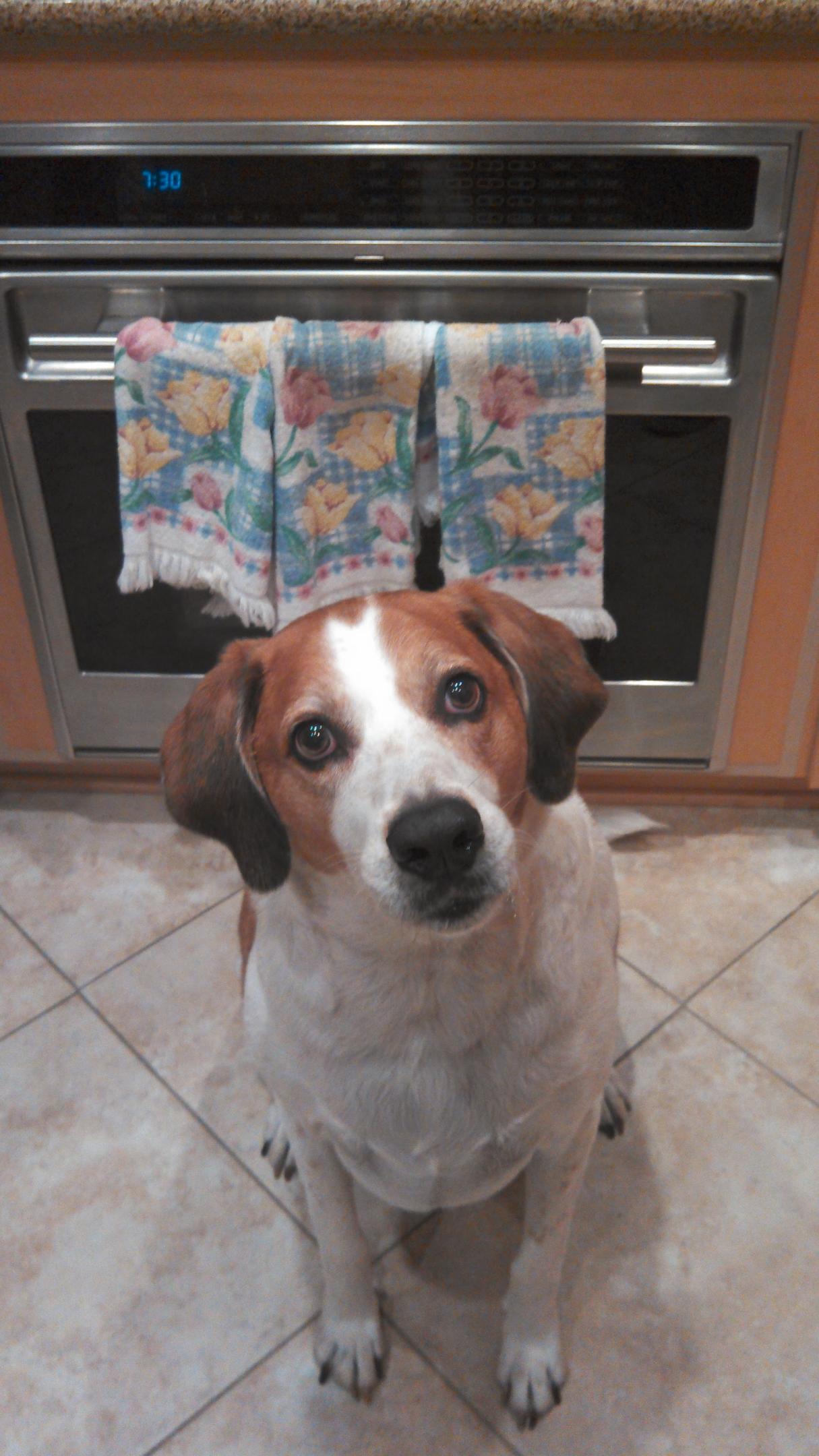TPLO Surgery: Helping Dogs Get Back on Their Paws
If your dog has a torn ACL (anterior cruciate ligament), you might have heard your veterinarian mention TPLO surgery. While it sounds technical, it’s a common and highly effective procedure to help dogs regain mobility and comfort.
To show why it matters, let me share a story about my childhood dog, Sammy Jo, an American Foxhound (think beagle but lab size) with a personality as big as her… well, let’s just say her couch-dwelling attitude.
Meet Sammy Jo

Sammy Jo was not exactly active. She could barely get off the couch, and as a puppy-adjacent adolescent, I would sometimes jokingly call her my “beached whale.” She preferred to be fed like the Greek goddess she thought she was: lavishly, indulgently, and without compromise. She had a hound’s natural love of food, which made her twig-like legs look all the funnier—like something a toddler would draw if they were sketching a cow. Her spots, like a Jersey cow, only added to the effect. And her side-eye? Legendary. She was judgmental in a way that only a sweet, slightly spoiled dog could be.

When Sammy Jo Needed TPLO Surgery
Unfortunately, Sammy Jo tore her ACL. For dogs, this is more than just a limp—it’s painful, and they often compensate with the other leg. In her case, as is common, her other ACL ruptured too. That meant she needed TPLO surgery on both knees to regain stability.
What is TPLO Surgery?
TPLO stands for Tibial Plateau Leveling Osteotomy. Simply put, it stabilizes a dog’s knee after an ACL tear. Instead of trying to repair the ligament itself, the surgeon changes the angle of the tibia so the knee becomes stable when the dog walks or runs.
The Surgery and Recovery
Board-certified orthopedic surgeons, like Dr. Zach Smith, perform TPLO surgery by:
- Evaluating the dog’s knee and overall health
- Cutting and rotating the tibia to stabilize the knee
- Securing the bone with a metal plate and screws
- Insert picture here of xray with plate
- Insert picture here of xray with plate
- Closing the incision and providing a post-operative care plan
Recovery requires patience. Sammy Jo, of course, was not thrilled about her weight loss plan or activity restrictions. But with guidance, we carefully monitored her recovery, supported her rehabilitation, and encouraged controlled exercise.
How long will it take for my dog to recover from TPLO surgery?
Healing from TPLO surgery is generally rapid.
- About half of all canine patients begin walking on their injured leg within 24 hours of surgery.
- Two weeks after the operation, most dogs bear moderate to complete weight on the affected leg.
- By ten weeks, most dogs do not have an appreciable limp or gait abnormality.
- Four months after the operation, most dogs can begin walking and playing normally, with only the most stressful activities restricted.
- Within six months, most dogs can resume full physical activity.
Pain management during and after knee surgery is critical, so be sure to give all medications as prescribed and use them until they are gone. Post-operative physical rehabilitation can improve healing and speed the time it takes for your dog to return to normal activity. Ask your veterinarian about incorporating rehabilitation into your dog's recovery plan (Blog: Is rehab really needed? link)
The most common complication after TPLO is infection. Studies assessing outcome have shown various rates of complications, with an average of roughly 10%-30%, with smaller dogs tending to show fewer postoperative problems. Dogs typically will need several recheck examinations and X-rays (radiographs) to ensure the area is healing properly.
Many dogs return to normal activities within 3-6 months, even after bilateral ACL surgery like Sammy Jo.
Why TPLO is Important
TPLO surgery is often the preferred method for larger or active dogs, but it’s also life-changing for less active pups like Sammy Jo. Without surgery, ACL injuries can cause chronic pain, arthritis, and decreased quality of life.
💛 With TPLO surgery, dogs can move comfortably again—whether they’re a spry athlete or a judgmental, food-loving hound with the heart of a Greek goddess.
Sharing Sammy Jo’s story helps remind us: every dog’s journey is unique. The recovery can be tough, and sometimes they won’t appreciate the new diet or exercise plan, but the result is worth it: a healthier, happier dog ready to enjoy life again.
If your dog has an ACL injury, talk to your veterinarian about scheduling a consultation with a board-certified orthopedic surgeon like Dr. Zach Smith.
